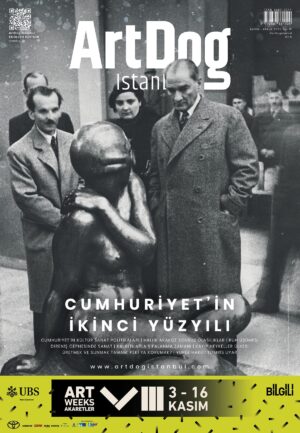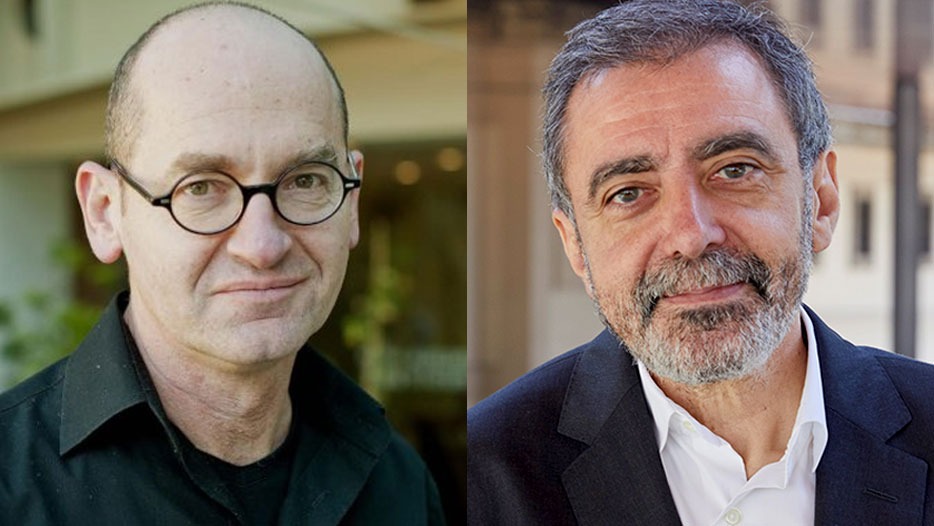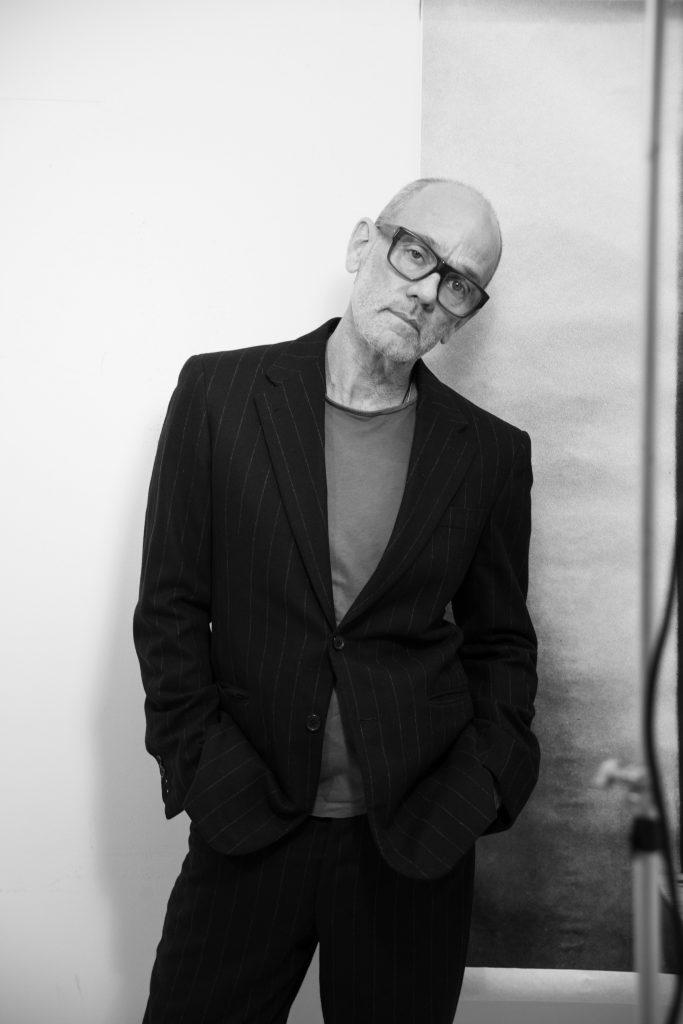If we need to define the creative process of Sven Marquardt, we should know and define the word ‘polarity’. Marquardt, famous as a head of Berghain doorman, hides his creative gem under his looks, works only by night but takes his photographs during the day, loves to be outside but can close his mind, be alone and write an autobiography, loves to take classical analog photos but also merges different digital techniques such as video mapping into his process, brings art scene to the club and club to the art scene. His Istanbul show Nachtblende, initiated by Goethe-Institut Istanbul, took place at GALERİ, Yapıkredi Bomontiada, and hosted Marcel Dettmann’s music performance and Lars Murasch’s video mapping performance simultaneously. Marquardt brought the Berlin club night to Istanbul while letting the audience taste his artistic approach via analog photographs.
How do you manage to create lots of things simultaneously? You have a book, and you are a photographer working with an analog camera, but at the same time, you work for commercial campaigns; hence, you melange subculture and club culture with your artworks… It seems like so many creative processes are going on simultaneously… How do you come up with your own artistic experience?
For me, everything is a process, and all endeavors merge and overlap. The general progress is crucial for me. And everything goes along together. Each Project merges into another and comes up as a new venture and new project. Also, an essential aspect of my artistic endeavors is that I do not work alone. I have a team, and it is a small team, but these people are all my friends and family.
How did your journey through photography start?
There is an agency within Berghain (world famous club in Berlin) where we book musicians, DJs, and producers, Ostgut Booking. I started to take photos of these artists. Through my contacts with musicians (I took many musicians’ photos), I realized that I brought photography into club and club culture to photography artists.
The fact that I am at the core of the electronic music scene in Berlin also helped merge these two worlds into another: nightlife and photography.


So we can say you have carried photography from art galleries to nightclubs?
Yes, and it also brought new audiences to the scene. You do not expect to see framed photography work in a club. People do not go to clubs to see art; when you enter an art gallery, you do not expect to hear club music or see a club culture. So, having an opportunity to showcase art in different venues was my drive.
But different places, venues, and meeting different people also brought new projects, just like this Istanbul project.

You also love fashion and do commercial projects. How do you find balance?
Because these are all new artistic ways for me to show art, even in commercial shootings, I work as I am working in my artistic stance. I am trying to balance between fashion photography and non-commercial projects.
For me, artistic freedom is essential. I work with an analog camera, and in daylight, it does not matter if I am taking photos for art or commercial stuff. The Project itself should influence me.

So, do you search for any artistic stance in your subject (people you photograph)?
When I see people, I never tell them to change their look for me, wear this, or do that. I never want them to make a facial expression or anything extra. I leave them as they are. This also includes style and looks. When I am there with my camera and the person I will photograph is there, that is the moment. And this moment I love the most; that’s why I love my profession. Everything is about that moment, not the venue, place, or street.
Your photos all reflect club culture, and I think there is a hidden meaning: nighttime and the time that is hidden when everyone is not around… How do you reflect on that?
My photos reflect nighttime from the last 25 years and club culture. Most people ask me if these photos are taken during the nighttime. In fact, all of them are taken during the daytime. These people are bouncers, djs, and musicians; they all come from the nightlife.
We all know about you and Berghain, that you are one of the most famous bouncers in the club. But, there is another aspect of it. It seems like there is a community there, and everyone is related to art… Can we say that?
It was always like this. There have been places like that in the world, for example, Andy Warhol and The Factory, full of art and artists, and these places (just like Berghain) are magnets for creative people. Throughout the years, Berghain went from a club to a venue, collaborating with high art. So, it is an independent space combining underground club culture with art. It is unique because it is not commercial; those artists do not have to sell anything. So they can be 100 percent free.

Remember, before the interview you said to me ‘You have let us into Berghain’ and it is nice. Again, this is about club culture. So I can say, in my projects, the headline is always club culture. Within this culture (in Berlin also), during the last ten years, I saw different cultures and people; right now, we are here in Istanbul.
You have this mindset of creating art, and it seems that you are always living in this creative process in your mind… Maybe in the future, we might see your moving images, short films?
Last year, during a project in Iceland, I was using my analog camera one day and the other day I was filming. These are different things for me; looking through analog and digital cameras are two different worlds. But it interests me cause, yes, I can say am always living in that creative phase.

Can we still see you at the door of Berghain?
Yes, I am still there from time to time. Obviously, it is much less than in the past, but that was the plan from the beginning. I am there on Sundays usually.
Do you still enjoy it?
Yes, I do. This is my way to connect with the younger generation, and it is so inspiring to see younger generations, seeing them.
So what about your current show Nachtblende? The name also comes from the concept of night, and there is a performance along with this exhibition…
Nachtblende is a German word, and it is something like night vision or night aperture. It is an old movie starring Romie Schneider. I chose the name cause the photos are about the night.
In this exhibition, there will also be a video mapping performance. I love to see my photos blending with other visual arts performances and projects. So, I added my analog photos with video mapping performances. Lars Murasch did the video mapping, and Marcel Dettmann performed for one hour, once again I aimed to blend club culture with arts in this Nachtblende show. The video mapping consists of 120 photos of Marcel Dettmann that I took in the last 15 years, and he performs during the slide show. So it’s called Nachtblende Slide. The photos are classic, and the video mapping is so digital I like to merge everything and combine different projects.
From everything I heard, I thought your creative process is full of polarities. For example, you work at night, but photos belong to nightlife; you are very communicative, but at the same time, you can be all alone and write a book; your photos are classical analogs, but you love to blend them with digital arts, and maybe we can also say contradictions and polarities do influence the creative process…
Yes, exactly, I feed from that, everything has polarities and contradictions, people have this, I get influenced by them also. I love to feed from these kinds of things. Mixing everything together, bringing art scene to the club and club to the art scene is also part of this. I mean, another thing is night is also black and white…







